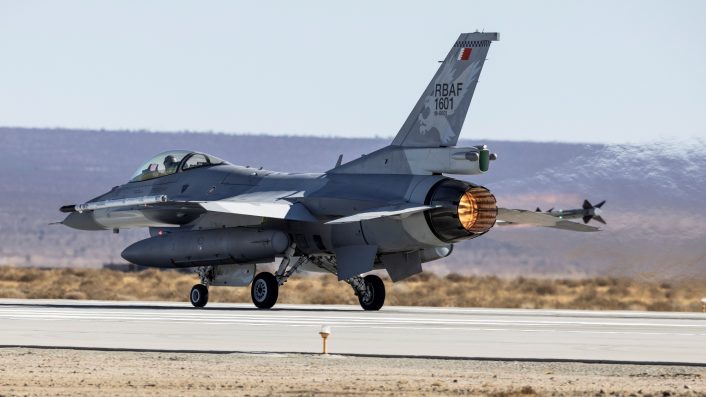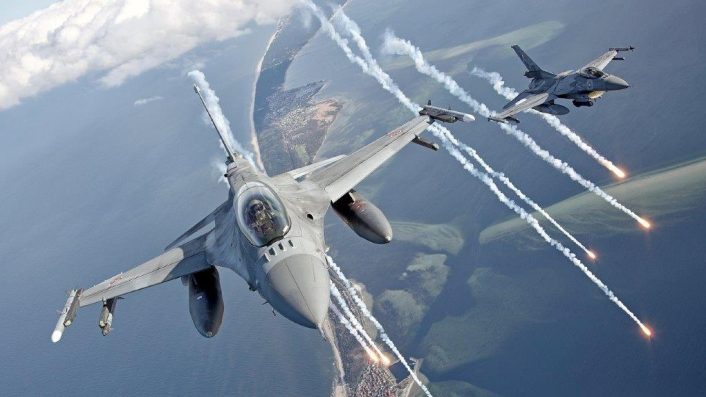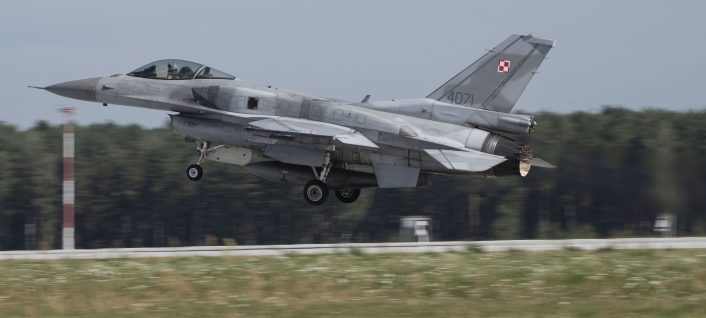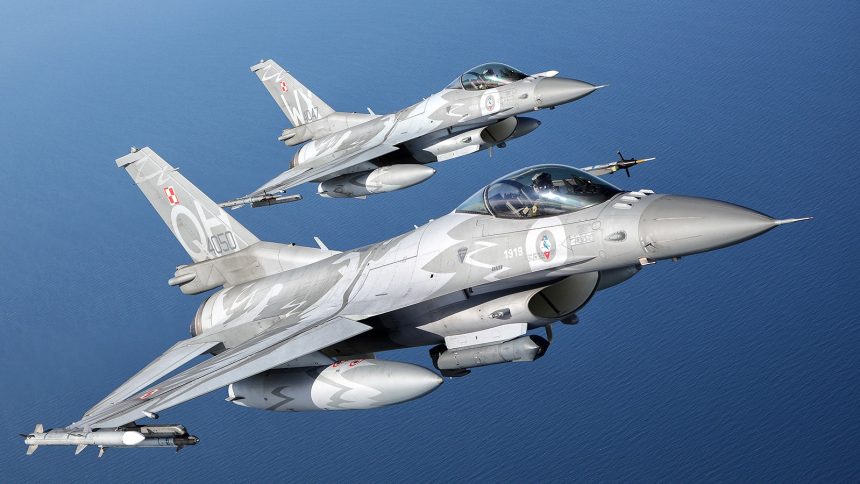The AN/ALQ-254 Viper Shield will be installed during the upgrade of the fleet of 48 F-16C/D Block 52+ jets to the F-16V Block 72 standard.
L3Harris Technologies has announced on Aug. 28, 2025, that Poland selected the AN/ALQ-254 Viper Shield electronic warfare (EW) suite to equip its F-16s as part of the Mid-Life Upgrade. The details about the acquisitions have not been disclosed, although the company said the system will be procured through the U.S. government.
“We are honored Poland selected us to upgrade their F-16V multirole fighters,” said Ed Zoiss, President, Space and Airborne Systems, L3Harris. “Viper Shield is in production and will enable pilots to identify, locate and counter rapidly evolving threats faster with enhanced success.”
The advanced, all-digital EW system will provide a virtual electronic shield around the aircraft, enabling warfighters to complete missions safely in increasingly complex battlespace scenarios, says L3Harris. Viper Shield is also being tested aboard an F-16C Block 70 of the Royal Bahraini Air Force at Edwards Air Force Base, California.
Viper Shield
L3Harris says it developed the new AN/ALQ-254(V)1 Viper Shield in partnership with Lockheed Martin and the U.S. Air Force to provide U.S. allies with “cutting-edge countermeasures against sophisticated, ever-changing threats.” The company says that the system, composed of six line-replaceable units (LRUs) and a cockpit display, is based on an all-digital architecture which uses commercial-off-the-shelf (COTS) technology for enhanced system performance, a smaller form factor, reduced weight and easier future upgrades.

Viper Shield’s digital radar warning receiver (DRWR) technology integrates seamlessly with the aircraft’s new APG-83 active electronically scanned array (AESA) radar, says the product’s page, to deliver greater situational awareness. The system also includes a digital radio frequency memory (DRFM)-based jamming system, which provides enhanced capability against advanced threats.
The manufacturer says it designed Viper Shield with fewer critical components than previous generation EW systems not only to obtain a smaller form factor and reduced weight, but also a higher mean time between failure and lower lifecycle costs. The modular design, which supports swapping LRUs in the field, together with the COTS technology and software-defined architecture, allows to simplify future upgrades as technology and threats evolve.
The goal is to provide a virtual electronic shield around the aircraft, with state-of-the-art capability, to address emerging and future threats with a fully integrated, internally mounted system. This eliminates the need to employ external EW pods usually installed on the centerline station, freeing it for other payloads such an external fuel tank.
L3Harris said in January 2025 it is already on contract to provide Viper Shield to “six international partners” for installation on 168 new F-16s. Among the F-16 Block 70s that will receive the system, according to Foreign Military Sales (FMS) notifications, are Bahrain, Bulgaria, Morocco, Slovakia, and Taiwan.

Greece and Jordan are also acquiring Block 70s, but have not disclosed which EW suite they will use. Before the selection by Poland, Viper Shield has also been included in the FMS notification of the possible sale of F-16s Block 70/72 to the Philippines. The delivery of Viper Shield is expected to start in late 2025, entering service during the next year.
Polish F-16 MLU
In August 2025, Poland signed a deal worth $3.8 billion for the Mid Life Upgrade of the Polish Air Force’s F-16 fleet. As part of the deal, all 48 F-16C/D Block 52+ jets currently in service will be upgraded to the F-16V Block 72 standard.
The Polish F-16s were delivered between 2006 and 2008, and are considered to be among the most capable F-16s in Europe. The aircraft will be modernized at the Military Aviation Works No. 2 in Bydgoszcz, in the northwest of the country, with a positive impact on the Polish defense industry and economy.
In October 2024, the U.S. State Department approved the Foreign Military Sale (FMS) to Poland of the F-16 Viper Midlife Upgrade and related elements of logistics and program support for an estimated cost, at that time, of $7.30 billion, according to the Defense Security Cooperation Agency notice.

Among the new systems which will be installed during the upgrade we can find the APG-83 AESA (Active Electronically Scanned Array) radar, the AN/ALQ-254V(1) Viper Shield advanced electronic warfare (EW) suite, the Joint Helmet Mounted Cueing System (JHMCS II), Phased Array Warning System (PAWS-2) infrared missile warning system and the new Martin-Baker US18E ejection seat. Additionally, work will be done to extend the service life to 12,000 flight hours.
Work on the weapon capabilities appears to be also included, as the package features AGM-158 Joint Air-to-Surface Standoff Missile (JASSM) Flight Test Vehicles, GBU53/B Small Diameter Bomb II (SDB II) Guided Test Vehicles, GBU-39(T-1)/B Guided Test Vehicles and AIM-9X Block II Sidewinder Special and Captive Air Training Missiles, as well as MS-110 reconnaissance pods.
The specific mention of the GBU-39 and GBU-53 is notable, as neither is currently in service in Poland. While there is an FMS notice for up to 1,400 GBU-39s for Poland, released in May 2025, there are not details regarding the GBU-53 acquisition.
With the entire fleet being upgraded to the Block 72 Viper configuration, the Polish F-16s will have a great boost in their capabilities. This will also allow them to better complement the F-35A Husarz that the Polish Air Force is currently introducing.









